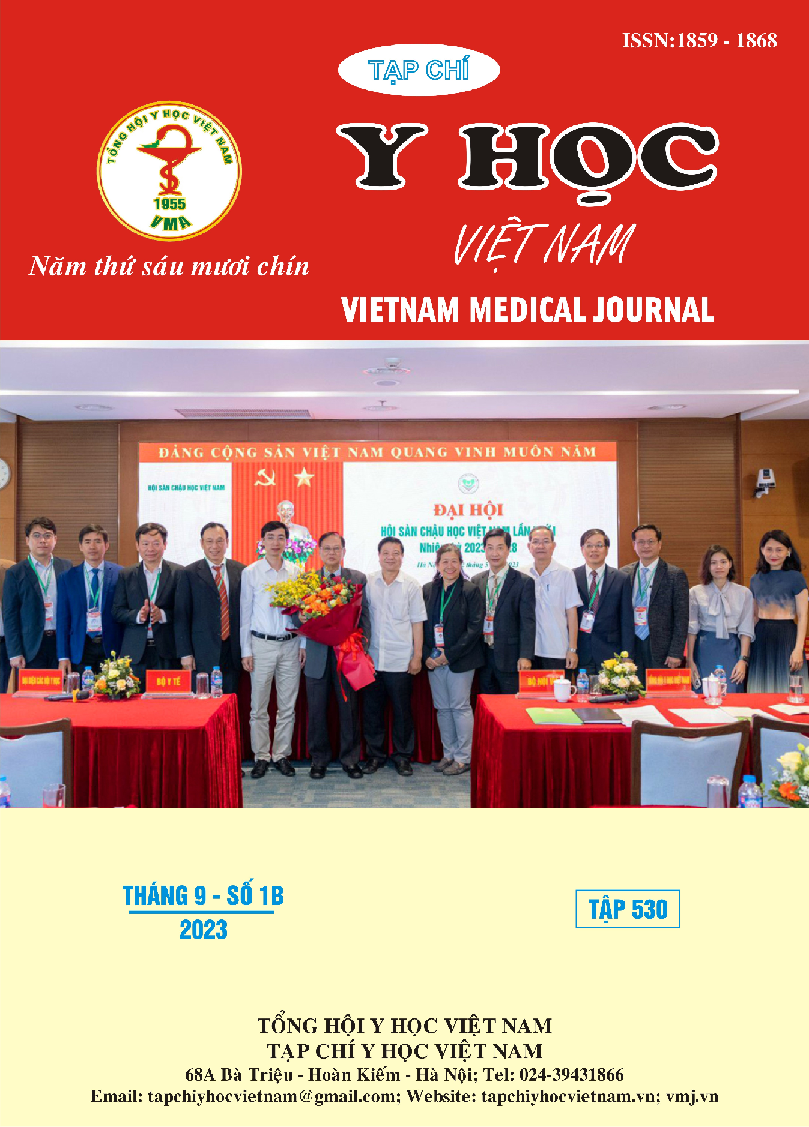OUTCOMES OF OPEN SURGICAL TREATMENT OF GASTRODUODENAL ULCER PERFORATION USING THE FALCIFORM LIGAMENT AT BACHMAI HOSPITAL
Main Article Content
Abstract
Introduction: Open surgery is often indicated in patients that are ineligible for undergoing endoscopic procedures; in order to strengthen the sutures thus avoiding leakage, the falciform ligament is often utilised beside greater omentum. Objects: Evaluation of surgical treatment results and relevant factors of open surgery using the falciform ligament in Bachmai Hospital. Subjects and Methods: Descriptive, retrospective research on 64 patients underwent open surgery of gastroduodenal perforation closure with falciform ligament from January 2018 to June 2023. Results: The average age of our research patients was: 67.53±14.67 (38-97) years old. Perforation diameters (mm): 5 – ≤10: 78.1%; > 10: 21.9%; site: duodenum, pyloric, pre-lyporic was 79,7%, 15,6%,4,7%; characteritic: soft, hard was 68,8%, 31,3%. The average hospital stay length was 9.42±6.02 (1-26) days, postoperative ileus was 4.05±1.19 days. Postoperative complications: gastrointestinal leakage, pneumonitis, surgical wound infection, acute liver failure, multiple organ failure and mortality rate was 0%, 20,3%, 6,3%, 4,7%, 12,5 and 7,8 %; After one month of follow-up (n=38): Visick 1,2,3: 2,6%,44.7%, 52.6 %; after 6 months (n-23): Visick 1,2,3: 76.7%,23.3%,0%; gastric endoscopy shown that 86.7% of injuries was healed and 13.3% still persisted with ulcer. Simple logistic regression analysis results for mortality rate associated with complications: pneumonitis(p=0,041), acute liver failure (p=0.007), multiple organ failure (p=0.001); multivariate logistic regression analysis results for mortality rate associated with complication: multiple organ failure (p=0.012). Conclusion: The usage of the falciform ligament in gastroduodenal perforation closure is a feasible technique. Multiple organ failure is an independent factor associated with postoperative mortality.
Article Details
Keywords
open surgery for perforation closure, gastroduodenal perforation, the falciform ligament.
References
2. Fry DE, Richardson JD, Flint LM, Closure of an acute perforated peptic ulcer with the falciform ligament, Arch Surg Chic Ill 1960. 1978;113(10):1209-1210.
3. Costalat G, Alquier Y. Combined laparoscopic and endoscopic treatment of perforated gastroduodenal ulcer using the ligamentum teres hepatis (LTH). Surg Endosc. 1995;9(6);677-679; discussion 680.
4. Omelz A, Cicek E, Aydin C, Kaplan K, Kayaalp C. Omentopexy versus falciformopexy for peptic ulcer perforation. Ulus Travma Ve Acil Cerrahi Derg Turk J Trauma Emerg Surg TJTES. 2019;25(6):580-584.
5. Munro WS, Bajwa F, Menzies D. Laparoscopic repair of perforated duodenal ulcers with a falciform ligament patch. Ann R Coll Surg Engl 1996;78;390-1.
6. Jae Hung Chung, Cheol Woong Choi, Su Jin Kim, Sun-Hwi Hwang, Si-Hak Lee. Application of the falciform ligament patch for the prevention of duodenal stump leakage after gastrectomy: technical reporton a case series. Journal of Laparoendoscopic & Advanced Surgical Techniques, 2023, Vol.33, No.5.
7. A. Hedley Visick (1948). A study of the failures after gastrectomy. Hunterian Lecture delivered at the Royanl College of Surgeons of England. 1948; 3:266.
8. Nguyễn Hữu Trí. Nghiên cứu ứng dụng phẫu thuật nội soi một cổng khâu thủng ổ loét dạ dày tá tràng. 2017. Luận án tiến sỹ y học, Trường Đại học Y dược Huế.


